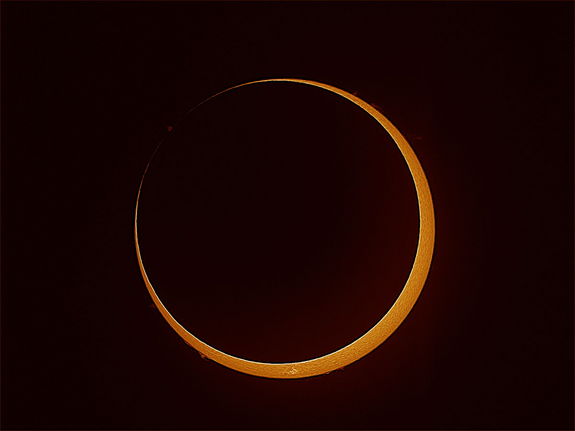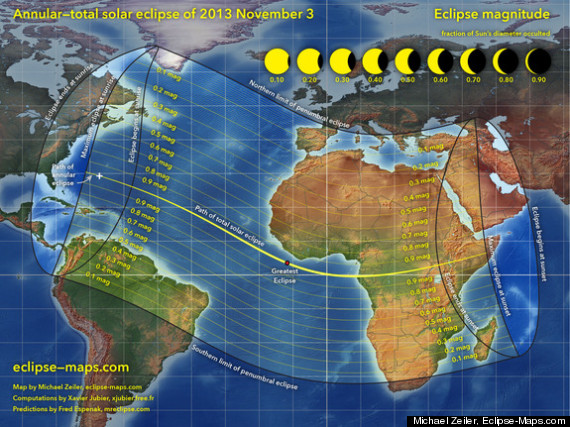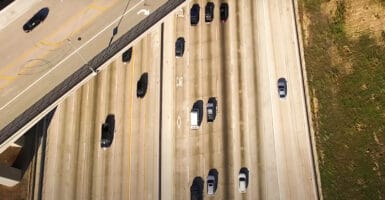Catch Sunday’s Rare Hybrid Solar Eclipse—It Won’t Happen Again For 159 Years
This article is more than 2 years old
 It’s a good thing we’re getting an extra hour tonight — I plan on waking up before 6:30 a.m. tomorrow morning to watch a rare hybrid solar eclipse. If you live in the Eastern U.S., rising early tomorrow just might give you a chance to see a pretty strange and awesome sunrise eclipse, and if you live in an 8,345-mile-long corridor that passes through Northern South America, Africa, or the Middle East, at some point tomorrow you’re likely to see a full solar eclipse.
It’s a good thing we’re getting an extra hour tonight — I plan on waking up before 6:30 a.m. tomorrow morning to watch a rare hybrid solar eclipse. If you live in the Eastern U.S., rising early tomorrow just might give you a chance to see a pretty strange and awesome sunrise eclipse, and if you live in an 8,345-mile-long corridor that passes through Northern South America, Africa, or the Middle East, at some point tomorrow you’re likely to see a full solar eclipse.
Hybrid eclipses like this, for which geographical location determines whether it’s a partial or full eclipse, are quite rare. This century, less than five percent of all central solar eclipses will be hybrid or annular-total eclipses. Most of these eclipses begin by looking like a ring of fire, in which the moon passes in front of the sun, but is too far away from Earth to completely block it out. Instead, the moon blocks out about 95% of the sun, leaving a halo of sun around its dark edges. This is how the eclipse will start, but it won’t stay this way for long.

Here’s where the eclipse becomes weird: after a mere 15 seconds, the eclipse will go from annual to total, and then remain total right through its path across the Atlantic Ocean and Africa. This hasn’t happened in 159 years, and won’t happen again for another 159. Just before the eclipse begins to transition from annular to total, it will become something called broken annular. This diamond necklace-type effect is produced when mountains on the moon are visible against the thin ring of sun, which makes it appear as though sparkling beads are surrounding the moon. This aspect of the eclipse will be tough to see — there’s a small (a mile or two wide) spot in the Atlantic about 400 miles from Bermuda where some eclipse enthusiasts hope to see the moon dressed in diamonds, but other than that, those of us who can see the eclipse will have to hope we can catch a glimpse of that on video.
The further east one lives in the U.S., the better the viewing will be — weather permitting, of course. Here in Boston, when the sun rises at 6:22 a.m. (which thankfully will really be 7:22 a.m.), almost two thirds of the sun will be covered, and some part of the sun will remain obscured for the next 52 minutes. If you’re wondering whether you can see the eclipse, you can check NASA’s page, use this eclipse calculator, or check this handy Google map. Just be careful to wear proper viewing attire or make one of those cardboard viewing devices. Or, if you want to do it the comfortable and easy way, check out live coverage of the event and maybe think about this poor planet, which has never seen a solar eclipse and probably never will.












